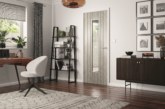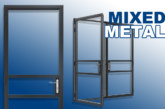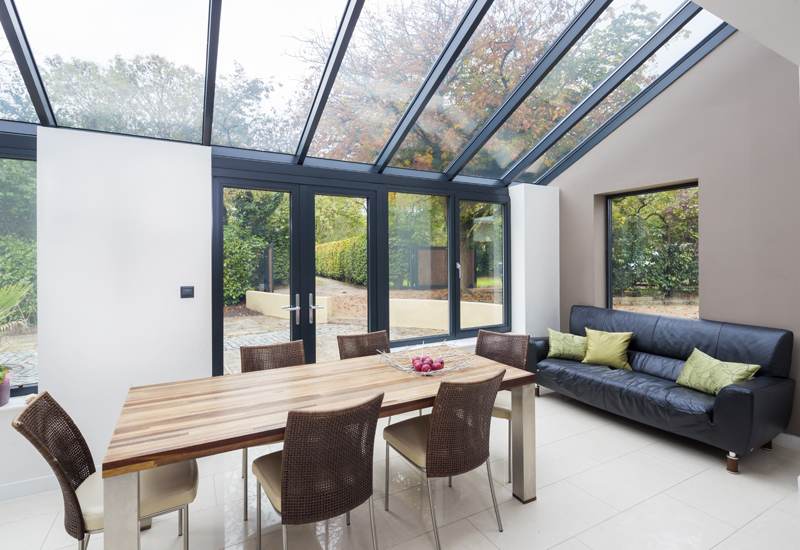
Higher standards of air-tightness and thermal insulation has meant some modern homes have become vulnerable to overheating. Phil Brown, European regulatory marketing manager at Pilkington, addresses the issue and discusses how glazing can help control the temperature of a home.
Over the years, the growing movement towards low and zero energy houses has meant that homes built today are better insulated and more energy-efficient than ever before. Although these changes have helped improve the carbon footprint of the UK’s housing stock, some homes are experiencing overheating, with properties located in urban areas suffering the most.
This not only makes a property uncomfortable, but it can also drive up the running cost of a home as occupants try to counter the problem by using air-conditioning and ventilation systems to lower the temperature. Increased internal temperatures can also put potential buyers off. According to a survey of more than 1,000 Londoners conducted by WSP Parsons, 54% said overheating would influence their decision when purchasing a home. 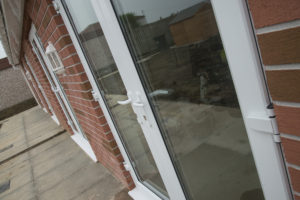
As weather experts predict the UK’s average temperature will increase as result of climate change, and with energy-efficiency playing a larger role in the desirability and value of homes, unless tackled, overheating could be a real issue for developers.
Fortunately, there are glass solutions available that can help overcome the problem and keep temperatures at a consistent level throughout the year, whatever the weather.
Can glazing help
Solar control glass is a key development in glass technology and, as its name suggests, it prevents excessive temperature build-up in summer months or in climates where the weather is hot all year round.
Until recently, solar control glazing was most commonly used in commercial settings and in high end residential projects. However, as concerns about overheating become more prevalent, it’s likely to become more relevant in the mainstream domestic new build market. Its use is particularly beneficial in conservatories and other glass extensions, as the expanses of glass used in such structures can make them vulnerable to an excess build-up of heat.
Installing solar control glazing can help lessen reliance on costly ventilation and air-conditioning systems, which in turn reduces a building’s carbon emissions. With some products, this is also achieved while maximising levels of natural light and reducing glare, enabling the indoor space to stay bright – without a heavy reliance on artificial lighting – and much cooler than would be the case if standard glass was used.
Solar control glass products are also available in toughened or laminated form for safety and security requirements, and can also be combined with other properties such as noise control. This means such solutions offer greater functionality and value to end users than just reduced internal temperatures.
Solar control glazing
Glass manages solar heat radiation by three mechanisms: reflectance, transmittance and absorptance.
When specifying solar control glazing, the most important parameter to consider is the total solar heat transmittance or g value. The g value is the total amount of solar radiation at near normal incidence that enters through the glass. This includes the proportion transmitted directly through the glass as well as the proportion absorbed by the glass and reradiated inwards. Generally, the lower the g value, the lower the solar gain through the glass.
Further still, some solar control glass incorporates near-invisible coatings on the surface that achieve the dual effect of allowing daylight in, while rejecting solar heat. A product that achieves this is the latest addition to the Pilkington Suncool range, Pilkington Suncool One 60/40, an off-line coated mid-range solar control glass with a thermal insulation U-value of 1.0 W/m2K.
Solar control glass that incorporates low emissivity properties can also help achieve optimum comfort levels all-year round; keeping the heat in during winter, and the space temperate in summer.
Triple glazing
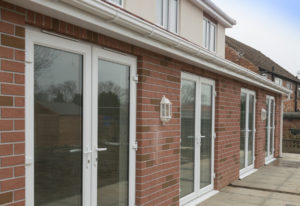 There has been much discussion within the glass and glazing industry about the advantages and disadvantages of triple glazing, with some debate that the weight and expense of triple glazing means that it’s not always the most suitable choice for some domestic new build projects. However, what’s often forgotten when discussing the performance of triple glazing is that it has a lower g value than corresponding double glazed units, meaning that it is better suited to combatting solar gains during the summer months and could have an important role to play should overheating become even more prevalent.
There has been much discussion within the glass and glazing industry about the advantages and disadvantages of triple glazing, with some debate that the weight and expense of triple glazing means that it’s not always the most suitable choice for some domestic new build projects. However, what’s often forgotten when discussing the performance of triple glazing is that it has a lower g value than corresponding double glazed units, meaning that it is better suited to combatting solar gains during the summer months and could have an important role to play should overheating become even more prevalent.
Concerns about overheating in residential buildings are becoming more prominent, but solutions are possible through careful design and product specification. By selecting the right choice of glass for the application, combined with suitable ventilation and sensible occupant behaviour, overheating can be reduced or even eliminated.

